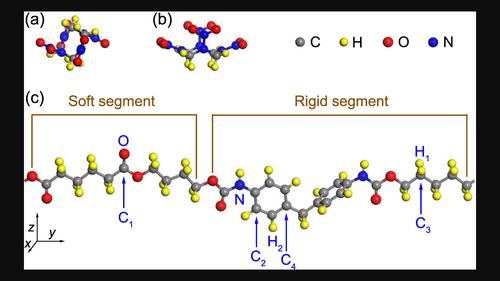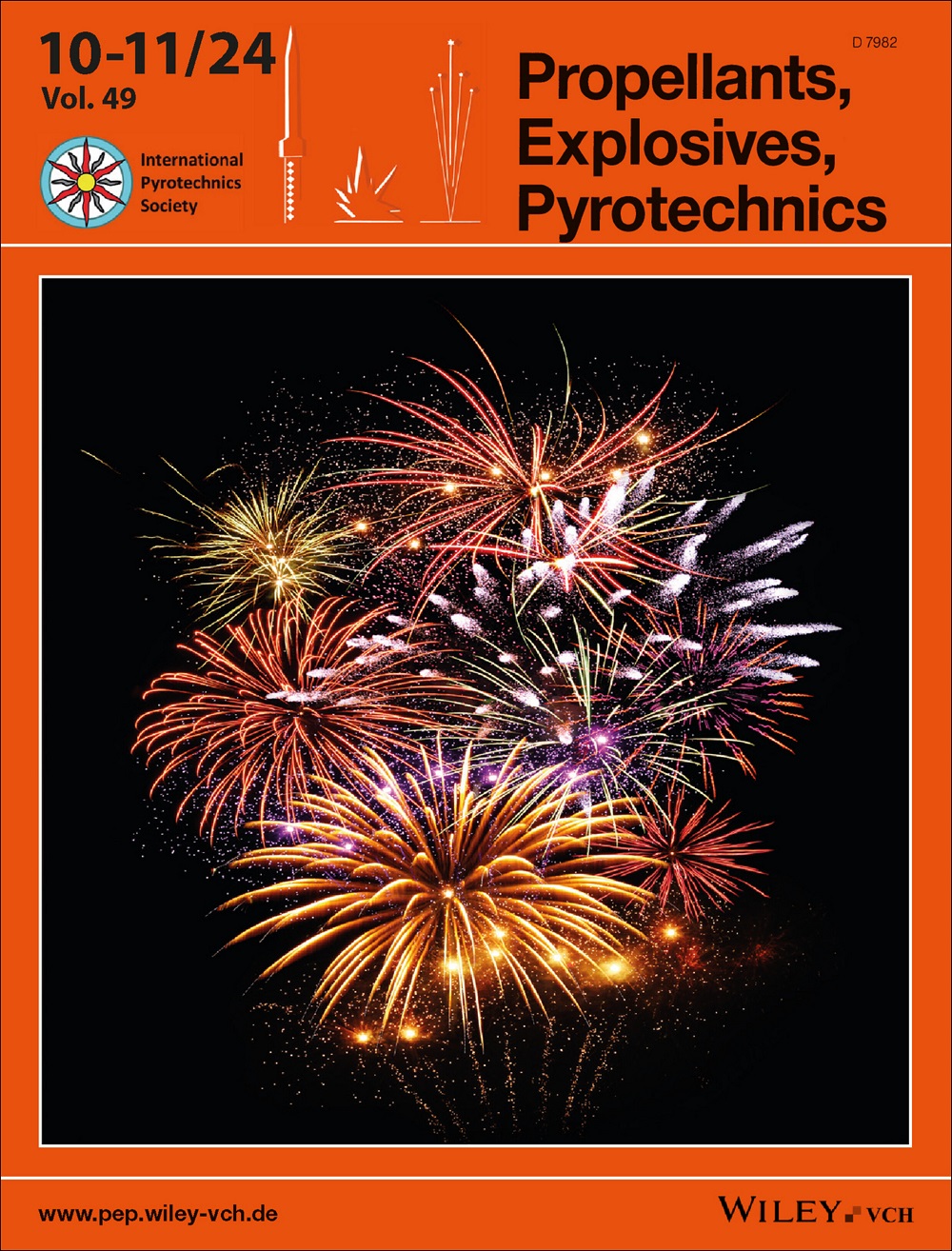HMX-Estane 混合物爆炸物界面力场和热力学特性的理论研究
IF 2
4区 工程技术
Q3 CHEMISTRY, APPLIED
引用次数: 0
摘要
通过第一原理计算和最小平方优化,得出了 HMX/Estane 界面的可转移力场。在力场的基础上,通过分子动力学模拟了由 HMX 和 Estane 组成的塑性结合炸药。得到了多晶体结构,并计算了一组热力学性质,包括热容量、热膨胀系数、体积模量、弹性常数和休格诺曲线。我们发现,混合爆炸物的热膨胀系数高于单晶,这是因为在高温条件下界面发生了脱粘。本文章由计算机程序翻译,如有差异,请以英文原文为准。

Theoretical study of the interfacial force‐field and thermodynamic properties for HMX‐Estane mixture explosives
A transferable force‐field of HMX/Estane interface is derived by first‐principles calculation and least square optimization. Based on the force‐field, the plastic bonded explosive consists of HMX and Estane is simulated by molecular dynamics. The polycrystal structure is obtained, and a set of thermodynamic properties are calculated, including the heat capacity, thermal expansion coefficients, bulk modulus, elastic constants and Hugoniot curve. We find that the mixture explosive has higher thermal expansion coefficient than single crystal, because the interface is debonding at high temperature condition.
求助全文
通过发布文献求助,成功后即可免费获取论文全文。
去求助
来源期刊

Propellants, Explosives, Pyrotechnics
工程技术-工程:化工
CiteScore
4.20
自引率
16.70%
发文量
235
审稿时长
2.7 months
期刊介绍:
Propellants, Explosives, Pyrotechnics (PEP) is an international, peer-reviewed journal containing Full Papers, Short Communications, critical Reviews, as well as details of forthcoming meetings and book reviews concerned with the research, development and production in relation to propellants, explosives, and pyrotechnics for all applications. Being the official journal of the International Pyrotechnics Society, PEP is a vital medium and the state-of-the-art forum for the exchange of science and technology in energetic materials. PEP is published 12 times a year.
PEP is devoted to advancing the science, technology and engineering elements in the storage and manipulation of chemical energy, specifically in propellants, explosives and pyrotechnics. Articles should provide scientific context, articulate impact, and be generally applicable to the energetic materials and wider scientific community. PEP is not a defense journal and does not feature the weaponization of materials and related systems or include information that would aid in the development or utilization of improvised explosive systems, e.g., synthesis routes to terrorist explosives.
 求助内容:
求助内容: 应助结果提醒方式:
应助结果提醒方式:


